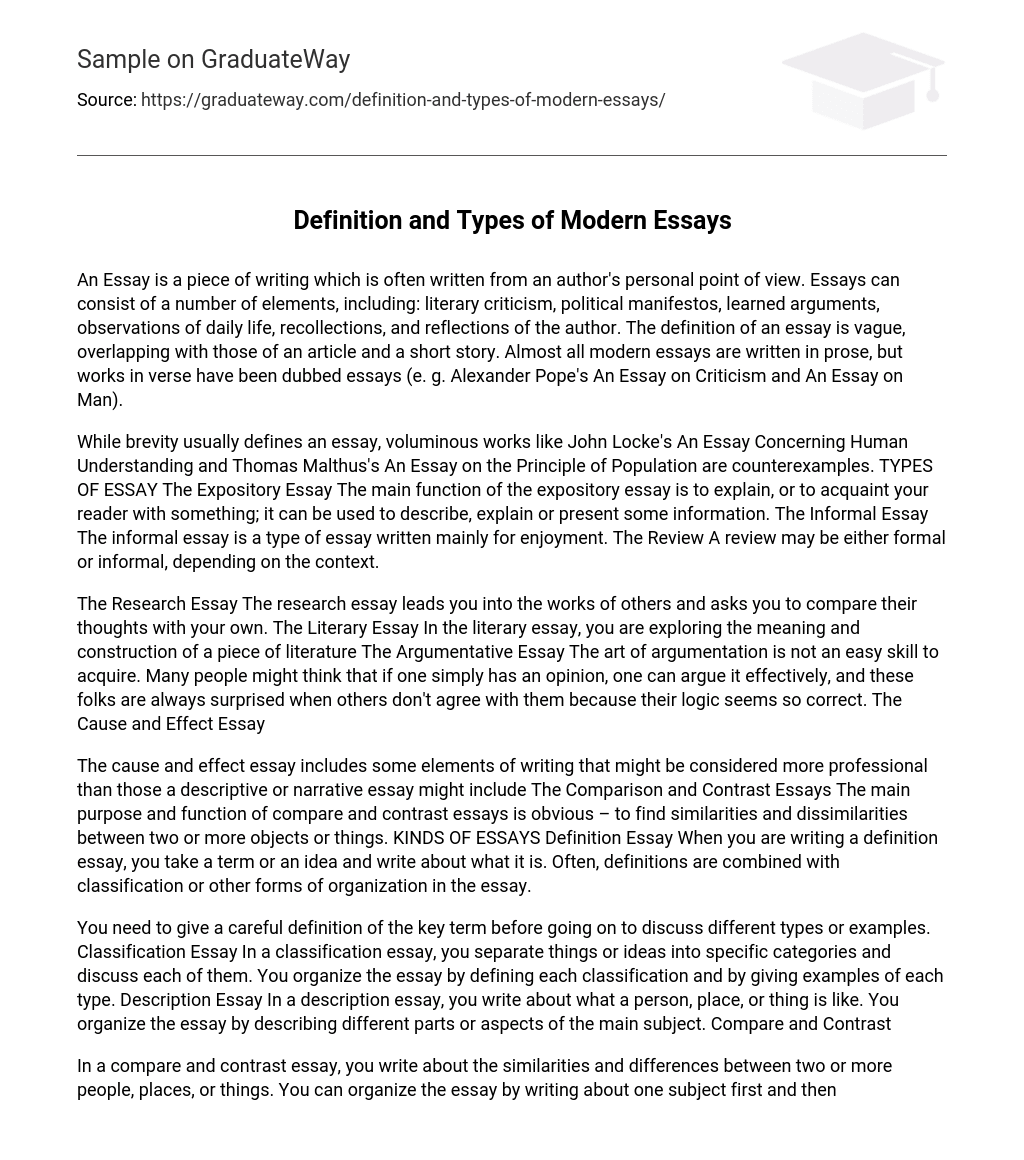Essays are a form of writing that typically express the author’s personal perspective. They can encompass different aspects, such as literary criticism, political manifestos, research-based arguments, observations of daily life, personal memories, and reflections. The definition of an essay is flexible and may intersect with articles or short stories. While most modern essays are composed in prose, there are also essays written in verse format like Alexander Pope’s An Essay on Criticism and An Essay on Man.
In general, essays tend to be brief, although there are some exceptions. Two prominent examples of longer essays are John Locke’s An Essay Concerning Human Understanding and Thomas Malthus’s An Essay on the Principle of Population. Essays take various forms, such as expository essays which seek to educate or introduce a topic. They can serve purposes like describing, explaining, or presenting information. Another category is informal essays that are primarily written for pleasure. Furthermore, reviews can be either formal or informal depending on the situation.
The Research Essay, the Literary Essay, the Argumentative Essay, and the Cause and Effect Essay all necessitate distinct skills. The Research Essay entails comparing others’ thoughts with one’s own, while the Literary Essay examines the meaning and structure of a literary piece. The Argumentative Essay assesses one’s capacity to effectively argue an opinion and comprehend opposing viewpoints. Lastly, the Cause and Effect Essay delves into exploring the relationship between causes and their effects.
The cause and effect essay incorporates certain elements of writing that may be considered more formal compared to descriptive or narrative essays. The Comparison and Contrast Essays mainly aim to identify similarities and differences between two or more objects or things. KINDS OF ESSAYS Definition Essay involves writing about the meaning of a term or an idea. Often, definitions are combined with classification or other organizational forms in the essay.
In order to effectively discuss various types or examples, it is essential to provide a precise definition of the key term. In a classification essay, the objective is to categorize things or ideas into specific groups and examine each one. This entails defining each classification and illustrating it with relevant examples. On the other hand, a description essay involves depicting the characteristics and qualities of a person, place, or object. The organization of this type of essay revolves around describing different components or aspects of the main subject. Another type of essay is the compare and contrast essay.
In a compare and contrast essay, the writer discusses the likenesses and discrepancies between multiple individuals, locations, or objects. The essay can be structured by examining one subject initially and then contrasting it with the second subject. An alternative, more efficient method involves organizing the essay by comparing each subject based on categories. In a sequence essay, the goal is to depict a succession of occurrences or a procedure in a particular order. Typically, this order is determined chronologically. The essay is organized by detailing each step of the process in the order of its occurrence.
Choice Essay: In a choice essay, the task is to select your preferred object, idea, or action. This essay is structured by presenting each option and expressing your opinion.
Explanation Essay: In an explanation essay, the aim is to clarify the reasons or mechanisms behind an event or occurrence. You must provide explanations for various causes and effects. The essay should be organized by explaining each specific cause or effect.
Evaluation Essay: In an evaluation essay, the goal is to assess individuals, ideas, and potential actions. Your evaluation is determined by specific criteria that you establish.
The essay can be structured by discussing the criteria used for judgment. It consists of three main parts: the introduction, body, and conclusion.
In the introduction, you should present your ideas and include elements that engage the reader.
The body of the essay is where you develop the ideas introduced in the introduction.
Lastly, in the conclusion paragraph, you wrap up your essay with final thoughts and closing remarks.





